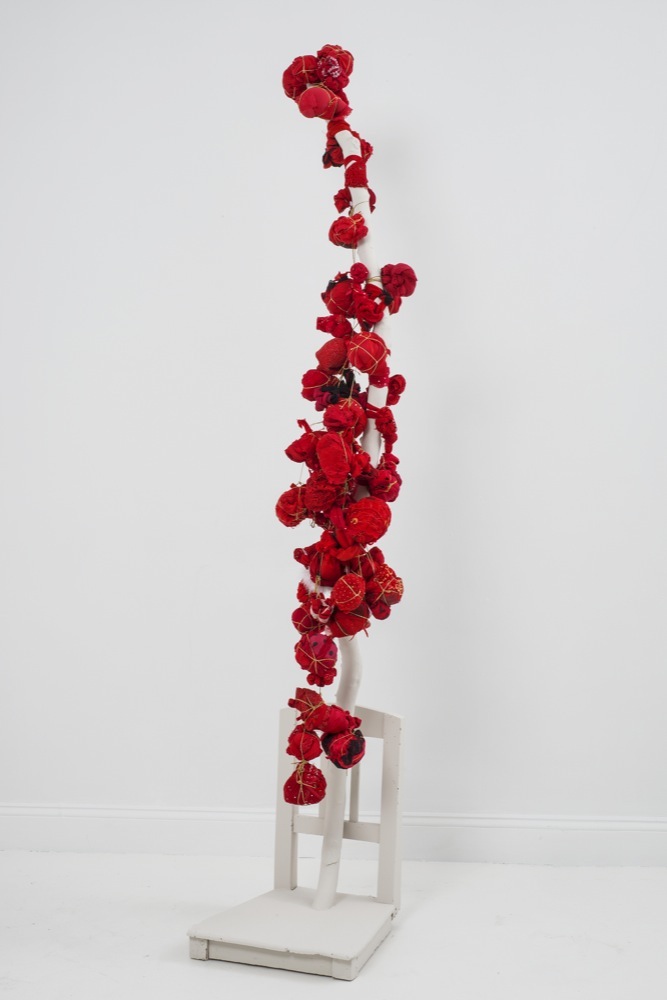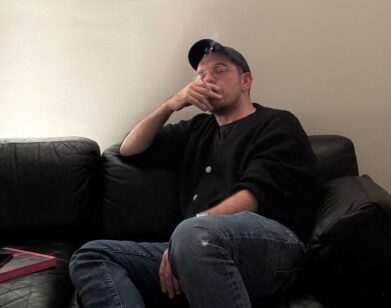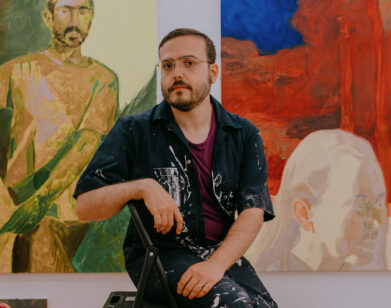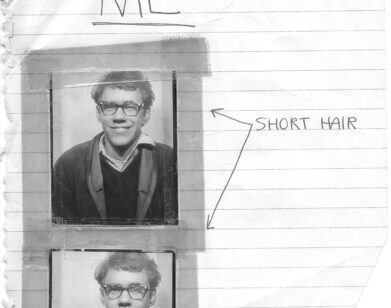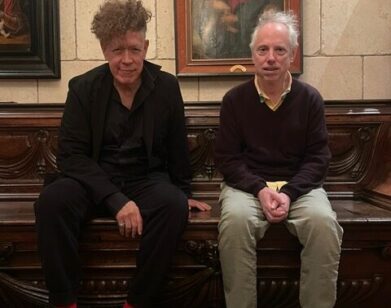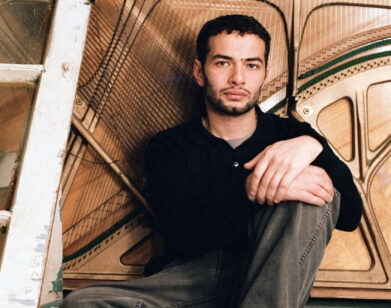Duro Olowu’s Third Time Around
British-Nigerian fashion designer and occasional curator Duro Olowu is celebrating the opening of the group exhibition “Making & Unmaking” at the Camden Arts Centre this Sunday. During the reception, he will give a talk with his wife, the director of the Studio Museum in Harlem, Thelma Golden. “We talk about things [that we are working on], but she doesn’t really know what’s in it,” he says, alluding to the fact that there are more than 60 artists in the show. Continuing with a laugh, he says, “We have never done this before. It might be the end of an era.”
Olowu, who began his career as a lawyer, turned to fashion design in 2004. His collections focus on playful, original prints and patterns, creating garments that convey his rich understanding of the history of textiles and their abilities to express individuality. The artists included in “Making & Unmaking,” such as Kehinde Wiley, Anni Albers, Isaac Julien, Chris Ofili, and Lorna Simpson, often share Olowu’s design sensibility.
“I always think of children when I am doing my work as a design or if I am curating a show, because there’s nothing greater than the eye of a child,” Olowu says. “The greatest thing in life is to try to hold onto some of that eye and freedom for as long as you can. I think the artists in this show fall into that category, because if you really look at the work, you can see they are not afraid to be simple yet powerful.”
“Making & Unmaking” marks Olowu’s third curatorial pursuit. He began in 2011 with the installation “Material,” followed in 2012 with the sequel “More Material.” His former shows, both held at Salon 94 in New York, were smaller, highly stylized groupings that paved the way for his current showcase. The U.K. exhibition explores how artists use patterns, textiles, and textures, both abstractly and figuratively, in their representations of life. “All of the [living] artists in this show had a certain freedom and all the non-living artists in the show fought for their freedom,” Olowu explains. “There’s a harmony amongst them.”
Prior to the opening in London, we spoke to Olowu over the phone while he took a break from the installation process.
ANTWAUN SARGENT: “Making & Unmaking” is your third exhibition to date. What makes a fashion designer decide to become a curator?
DURO OLOWU: I’m a fashion designer with a deep love of art. I have always appreciated the ability to put things in a way that allows for them, no matter how different, to come together aesthetically. That’s what I try to do with my work and I suppose consequentially that has extended into the art and curatorial world. I tend to not to think about it too institutionally, because the times I’ve done it, it has been hugely enjoyable.
SARGENT: What’s the inspiration behind this exhibition?
OLOWU: This exhibition really came out of a talk I had with Glenn Ligon at the Tate a few years ago. The director of the Camden Arts Centre was there and I really tried to show other sides of the artist. We talked about his love of fabric and how I saw some kind of a repeat weave in his some of paintings.
SARGENT: One of the things that I see as part of the foundation for “Making & Unmaking” and your fashion label is the use of patterns and textiles. For instance, in the exhibition you include a fabric painting by Eric Mack and Shelia Hick’s Cordes Sauvages / Hidden Blue. What about textiles fascinates you?
OLOWU: The reason textiles, fabric, weaving, and texture comes into it is because what I try to do with this show is expose the finished or almost-finished product of artists and artisans. The personal rituals they go through in their studios everyday—moving things around, touching things, dis-attaching things—that produces a deep conversation with their own creative spirit is what leads to the kind of work that is in the show.
The reason why textiles were quite crucial is that I collect textiles internationally. I have a large collection of West African textiles, and the intricacies of woven fabric over the last two hundred years is incredible. The Yoruba textiles in the show from late-19th to mid-20th century really are works of art. It reminds me of the similarities between artists who use figuration, video or photography as a way to strive toward their own private way, and the weaver on the loom trying to balance the different tensions to create a textile that reflects the personal, emotional, political, or sexual perspective of the maker.
SARGENT: Right, it also seems to be about how the artist wants to be seen.
OLOWU: The show is also very much about how artists and people want to be seen privately and publicly. Being Nigerian-Jamaican and growing up in England later, my family living in Lagos would always have the family photographer come round and have portraits done. I was exposed to that a lot. Seeing early Malick Sidibé or Hamidou Maiga, who have pieces in the show, was not a surprise to me. As you grow older, you start to appreciate why those men dressed up their studios’ backgrounds to make every shot of their clients individual. They were trying to create a personal [setting] for the people they were photographing. Whether it’s 1930s British painting, Lynette Yiadom-Boakye, Alice Neel, Hassan Hajjaj, or Lorna Simpson, it’s very fascinating to me that you really see a side of the artist that don’t usually come to the fore—a more questioning side, and I like that.
SARGENT: There’s also an exploration of pattern in the exhibition.
OLOWU: I feel that pattern, over the centuries and especially in contemporary life, is one way of differentiating oneself that allows the public to remember you in a more aesthetically abstract way. Also, artists love clothes. Artists of all ages, genres, and levels of success are obsessed with clothes, not as fashion but as these things that start off flat and end up mobile, draping, and caressing the body. Even artists who do abstract work, like Polly Apfelbaum or Stanley Whitney, have a very distinct way of dressing.
SARGENT: There’s also politics within “Making & Unmaking.” For instance, Wangechi Mutu’s Panties In A Bunch.
OLOWU: It’s the first work I put in the show because that was the first studio I visited.
SARGENT: Oh, really? What’s so interesting to me about that work is its abstraction.
OLOWU: Oh, absolutely. Wangechi’s work is political in so many ways. Wangechi also has a very intricate intellectual sensibility. Wangechi’s art is very strong and very aware of her femininity and who she is as a women. It’s very hard to combine that in a work unless you do that self-consciously, and that’s what that work is. She must of spent ages twisting and turning those underwear, and forming this kind of ode to growth and blossoming. It’s very positive but also dives into negative perspectives of femininity.
SARGENT: You can see the artist’s hand in these works, in a real way.
OLOWU: Yes, that’s very important. They use their hands a lot in the studio and the idea of the hand of the artist being involved in this process that leads to a work is a real testimony to what the art world and whole world needs—hands on integrity in the pursuit of beauty and as an record of an epoch.
SARGENT: Is that what you are trying to say with “Making & Unmaking”?
OLOWU: Yeah. In the end, I think artists and art and creativity and aesthetics are a major source of joy and integrity in the world. It brings people together and promotes understanding and acceptance.
“MAKINING & UNMAKING” OPENS SUNDAY, JUNE 19, AT THE CAMDEN ARTS CENTRE.

